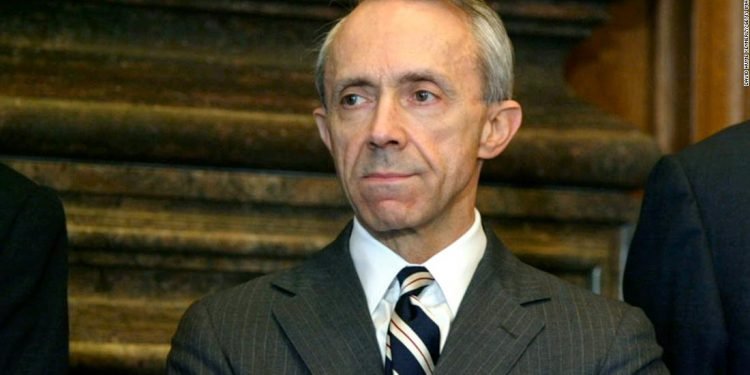Roe’s constitutional safety of abortion is in real peril.
However as is well-known, one of many junior justices on the Court docket, David Souter, secretly struck an alliance with Justices Anthony Kennedy and Sandra Day O’Connor to rescue Roe.
Garrow was proper. There’s a “very personal” doc that sheds mild on Souter’s ruling: a memo written by one among his clerks that argued for exactly the compromise Casey struck between authorized abortion and its regulation. The memo argued that the significance of authorized precedent demanded that the Supreme Court docket not overturn Roe. The repute of the Court docket as a impartial arbiter of regulation, wrote the clerk, depended upon it.
The memo is historic. Right here, and in my guide, it’s quoted for the primary time.
The origin of “Jane Roe”
Norma quickly discovered an unlicensed physician who would. However she couldn’t afford his $500 charge. She was scared, apart from, she later recounted, “to show my physique over to him.”
There was cause to assume that the regulation would possibly quickly change; within the coming months, Alaska, Hawaii, New York and Washington would legalize abortion. Nonetheless, abortion was then solely authorized in Oregon and California, and never explicitly banned in Washington, DC. And whereas it was out there to nonresidents within the latter two, Norma had no cash to board a aircraft.
Nineteen years later, in 1992, that proper was in jeopardy when the Supreme Court docket, and its presumed 5-4 conservative majority, readied to rule on Casey.
A historic memo, written for the ‘fifth vote to overturn Roe v. Wade’
David Souter was a deeply grounded particular person; the author Janet Malcolm would word that he possessed a “shifting absence of self-regard.” He had grown up in a farmhouse within the New Hampshire city of Weare, the place he had returned to stay after his education at Harvard and Oxford. He stayed in Weare till the Supreme Court docket took him from it, in October 1990, as an single man of 51.
Souter knew that abortion was prone to return to the Court docket throughout his tenure. His first time period on the Court docket was ending when, in June 1991, as former Harry Blackmun clerk Edward Lazarus later wrote in his guide “Closed Chambers,” he requested his 4 outgoing clerks to jot down down their ideas on the matter. Only one argued in favor of Roe, that clerk handing Souter 32 crystalline pages that centered on stare decisis — the doctrine that held, as Souter did, that authorized precedents ought to ordinarily not be overruled. On the matter of abortion, wrote the clerk, that doctrine was significantly compelling. “Roe,” he wrote, “implicates uniquely highly effective stare decisis issues.”
Outstanding amongst these issues, wrote the clerk, was that the affect of Roe on the number of justices posed a selected hazard. “If Roe is overruled,” he argued, “the general public will perceive that the Court docket’s reversal is explainable solely by cause of modifications within the composition of the Court docket.” Thus, he concluded: “The injury to the general public understanding of the Court docket’s selections as impartial expositions of the regulation . . . can be incalculable.”
All of this Souter learn. And he had concluded that the Court docket should reaffirm Roe when, in convention two days after oral arguments in Casey, a majority of his fellow justices concluded the other.
Souter was dismayed. And as Rehnquist, the Chief Justice, ready to jot down a majority opinion in assist of Pennsylvania and its abortion rules, Souter, as I word in my guide, got down to rescue Roe, reaching out to Justice O’Connor, after which, along with her, to Justice Kennedy.
A ruling that spoke not of privateness, however equality
The ruling was a compromise. Half of it, which Blackmun and John Stevens now joined, upheld the “important holding of Roe,” specifically, the suitable to an abortion via viability. The opposite half adopted a brand new subjective customary of abortion regulation, O’Connor’s “undue burden.” Souter, O’Connor and Kennedy concluded that 4 of the 5 Pennsylvania rules cleared that customary, and that grew to become the choice of the Court docket: Blackmun and Stevens joined the troika in hanging down the spousal notification requirement, and the remaining 4 justices voted with them to uphold the opposite rules.
The “undue burden” customary, which was now successfully the regulation, did away with the trimester framework of Roe, which left abortion to the discretion of a girl and her physician throughout the first trimester, however permitted the state to manage (if not outlaw) it throughout the second. Henceforth, states may impose abortion rules from the purpose of conception. “Even within the earliest levels of being pregnant,” the ruling defined, “the State might enact guidelines and rules designed to encourage her to know that there are philosophic and social arguments of nice weight that may be delivered to bear in favor of continuous the being pregnant to full time period . . .”
It was a outstanding sentence. For it spoke not of privateness — the authorized floor that Roe was constructed upon — however equality, the precept that future Justice Ruth Bader Ginsburg and others had famously asserted should undergird Roe as an alternative.
Souter, in black gown and graying hair, then turned to the authorized underpinning of Casey — the reliance on precedent that, he stated, now known as upon either side of the abortion debate “to finish their nationwide division by accepting a standard mandate rooted within the Structure.” He continued, studying aloud a passage that resonates at this time:
The Court docket isn’t requested to do that fairly often, having thus addressed the Nation solely twice in our lifetime, within the selections of Brown and Roe. However when the Court docket does act on this manner, its determination requires an equally uncommon precedential power to counter the inevitable efforts to overturn it and to thwart its implementation. A few of these efforts could also be mere unprincipled emotional reactions; others might proceed from rules worthy of profound respect.
However regardless of the premises of opposition could also be, solely essentially the most convincing justification below accepted requirements of precedent may suffice to display {that a} later determination overruling the primary was something however a give up to political stress, and an unjustified repudiation of the precept on which the Court docket staked its authority within the first occasion. So to overrule below hearth within the absence of essentially the most compelling cause to re-examine a watershed determination would subvert the Court docket’s legitimacy past any severe query.
Souter completed talking. He had been true to himself and to the instance of his hero, Justice Harlan. And in so doing, he had constructed upon the arguments of his clerk, that unnamed authorized scholar whose evaluation prefigured key components of the Court docket’s historic determination.











